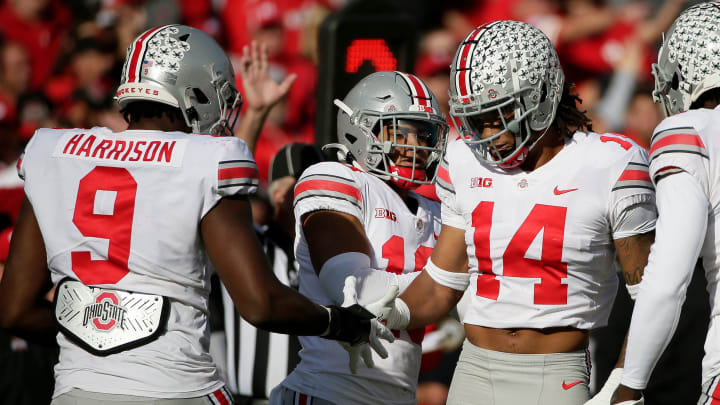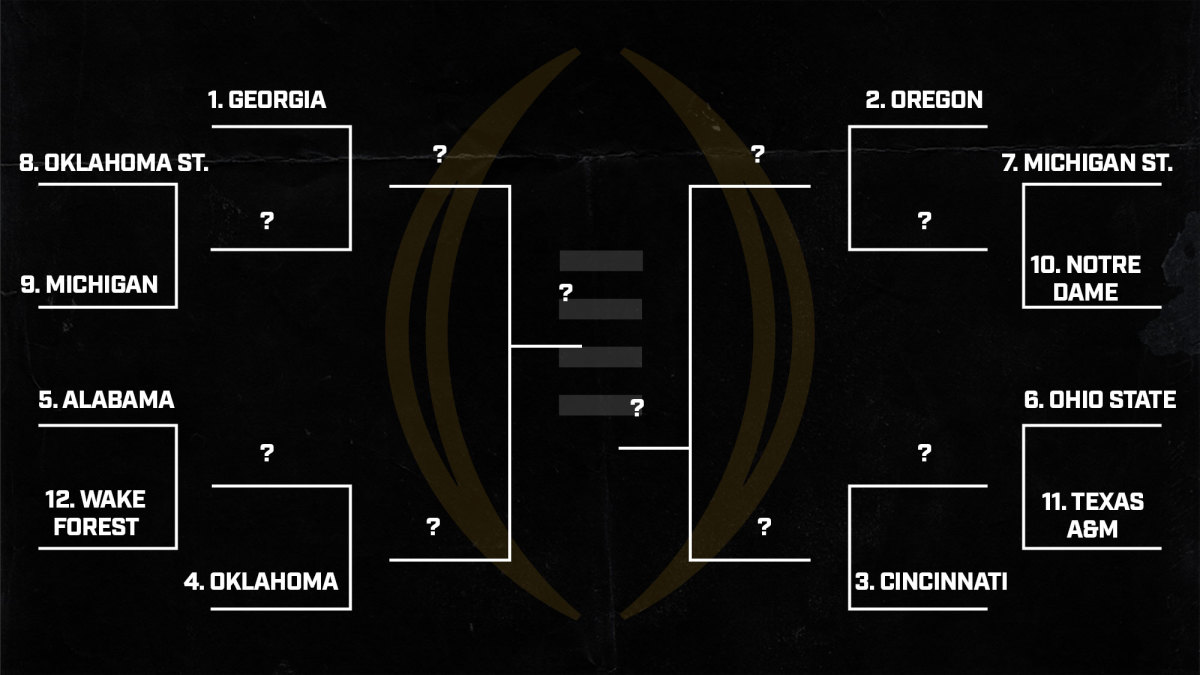Future Playoff Watch: What a 12-Team Bracket Would Look Like After Week 10

This is a weekly Sports Illustrated series using the current college football standings to create an imaginary 12-team playoff bracket based on the model proposed this summer by CFP executives. In case you’ve forgotten, the 12-team model features (1) the six highest-ranked conference champions and (2) the next six highest-ranked teams. The four highest-ranked conference champions get byes to the second round (independents are not eligible to receive a bye—sorry, Notre Dame).
The Fake 12-Team Playoff Selection Committee, for the first time this season, made zero changes to its field from one week to the next. The 12 teams that advanced to last week’s Fake Playoff also made it into this one. They’re just in a slightly different order.
The only real certainty about the field is that Georgia is No. 1. Outside of that very real fact, anything and everything is up for debate. For instance, spots 2–10 are a hodgepodge of one-loss teams with strong résumés and unbeatens with weaker résumés. There is an argument for No. 2 to be No. 10 (Oregon hasn’t looked dominant, after all) and No. 10 to be No. 2 (Notre Dame has one of the country’s strongest schedules and best losses).
This week produced one truly tough decision with Wake Forest losing at North Carolina: Who is the last conference champion to punch its ticket into the field? We’ll get to the answers later.
For now, to the bracket we go!

1. Georgia (SEC champion)
2. Oregon (Pac-12 champion)
3. Cincinnati (AAC champion)
4. Oklahoma (Big 12 champion)
--
5. Alabama (SEC at-large)
12. Wake Forest (ACC champion)
--
6. Ohio State (Big Ten champion)
11. Texas A&M (SEC at-large)
--
7. Michigan State (Big Ten at-large)
10. Notre Dame (Independent at-large)
--
8. Oklahoma State (Big 12 at-large)
9. Michigan (Big Ten at-large)
UTSA vs. Wake: Remember how I mentioned that the only truly tough call was selecting the last conference champion to advance into the field? Our committee debated deep into Sunday night over the Roadrunners and the Demon Deacons. One is undefeated playing in a Group of 5 conference and the other just took its first loss playing in a Power 5 league. Neither has many quality wins, which the fake committee deems as a road victory over a top-50 team or a home win over a top-30 team (using Sagarin rankings). Wake has one of those—a win at a Virginia team that is barely in the top 50 at No. 45. UTSA’s best win is at No. 76 Illinois. Wake’s strength of schedule is 76th; UTSA is 119th. In the end, the committee gave the nod to the Deacons for their much stronger schedule and their single quality victory.

B1G: It’s tough this season to see the real committee leaving out the Big Ten champion in its four-team field. But we did! For now, the league is behind the SEC, AAC, Pac-12 and Big 12 champions. To reinforce a point made earlier this season, wins and losses matter. Sometimes you have to forget the advanced metrics and rely on the W-L column. Each team in the Big Ten has at least one loss, and arguably its best team, Ohio State, has a defeat to a team it is competing with in this debate, No. 2 Oregon. What happens on the field matters.
That said, there is an appropriate debate to be made for the Buckeyes to be ahead of Oklahoma and Cincinnati. The Bearcats and Sooners have schedules that rank 70th or worse; Ohio State’s slate is at No. 40. Cincy has the best victory, at Notre Dame, of the three teams. But the Sooners are—outside of UGA—the only remaining Power 5 unbeaten. It’s a tough call, and a decision that will certainly get more difficult as time marches on. For instance, Ohio State finishes the regular season with Michigan State and Michigan, good enough victories to potentially leap it over Oklahoma or Cincinnati.
More College Football Coverage:
• ACC's Washout Shows True Value of 12-Team CFP
• Question Everyone You Believe in (Except UGA)
• SI's Top 10: Who Survived Another Wild Week?
